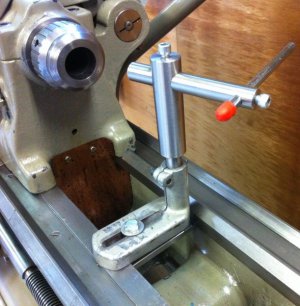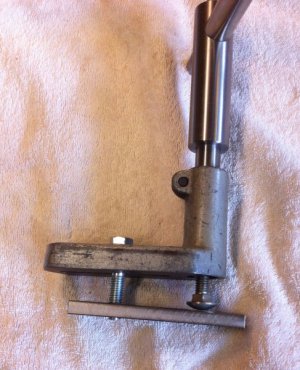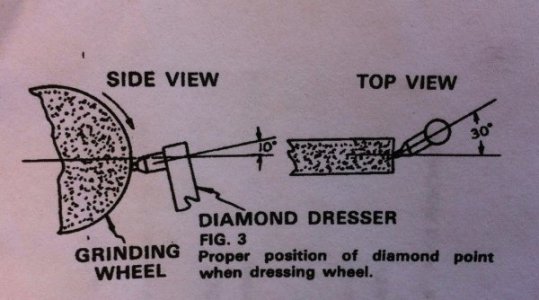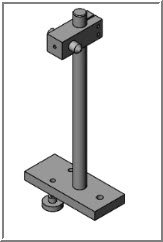- Joined
- Nov 26, 2012
- Messages
- 1,307
I had a bright idea to buy say a 10" diameter surface grinding wheel in exactly the desired thickness, grit & composition I wanted. And then have a water jet cutter make a whole bunch of custom size wheels for me. But I can also envision some danger signs. Not sure how accurate they could cut the axle hole & maybe stressing the wheel with jetting cutting action? The wheels I see look like some sort of molded process.
I make them with a carbide hole saw set from harbor freight. The set was cheap and it cuts the wheel easily.
Pic shows the hole saw set, the wheel and a couple of ID mandrels I made for my dumore tpg. One has been trued up and used the other not yet trued and you an see by it that the saw can cut some what crooked. Just start truing with a carborundum or the carbide file that comes in the set (I haven't tried that yet) then finish with the diamond dresser.
Glued my wheels on with metalset A4. It's alot like jbweld just a little tougher. JB weld would probably work fine.
For some unknown reason those wheels seem to be cheap on ebay they are 1" wide (that may be why) and a 60 K grit. They are recessed so approx 1/2" in the recessed area. It's a 7 x 1 x 1 1/4 wheel.
The hole saw set will put about a 3/8 hole in the cut wheel. I enlarged to 1/2 for my arbors with a drill bit. Changing the supplied drill to 1/4 might come in handy also. That's next on my list for some jig grinder wheels.





